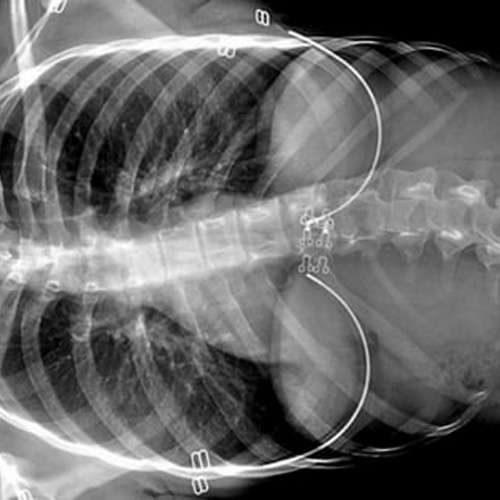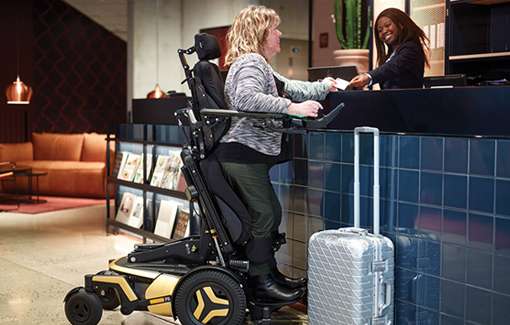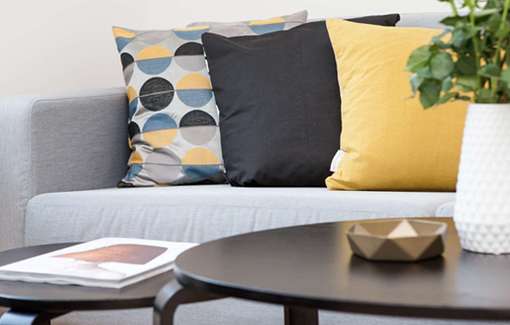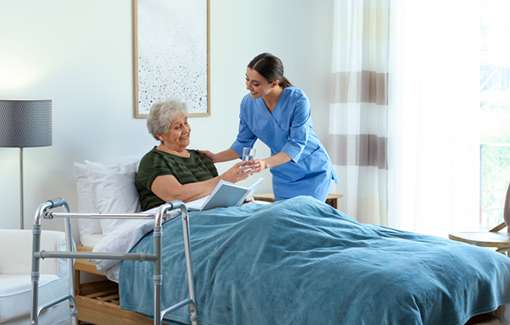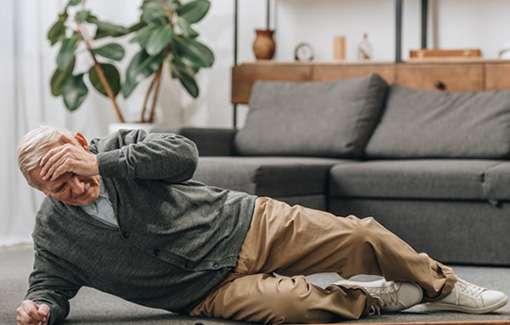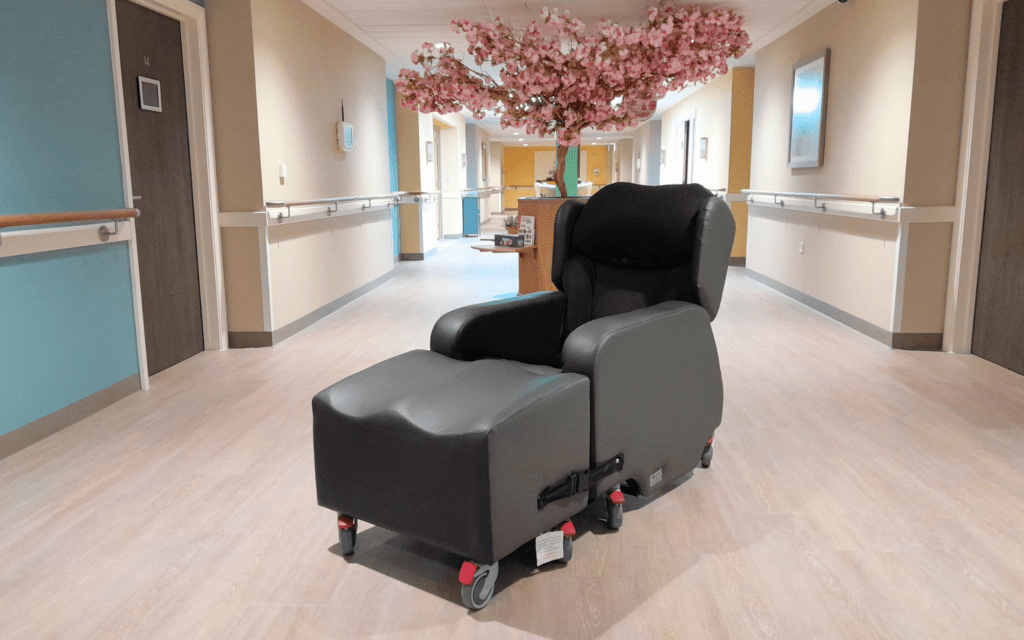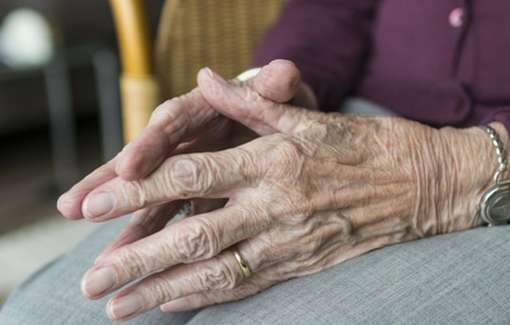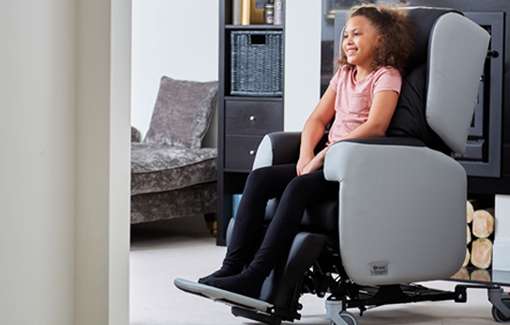Specialist seating for someone with scoliosis isn’t just about finding a chair that provides comfort. Scoliosis is a condition that makes the spine twist and curve to the side (making the spine appear C- or S-shaped). Although scoliosis it cannot be ‘cured’ or ‘fixed’, it can be improved with treatment.
The correct armchair for a person with this spinal deformity is one that is also one that can deliver the necessary postural support & even help improve midline positioning for individuals with severe cases of spinal curvature.
People with more severe scoliosis may need a specialised chair with the correct accessories and finding the most suitable chair can improve spinal positioning and aid proper posture.
As a general rule, if an individual with scoliosis is hoisted, they will require a care chair as this allows a mobile hoist to slide underneath the chair making it easier to hoist a person in and out of the chair using a sling.
A more mobile individual is advised to look for a rise and recline armchair that offers the same postural support without being accessible to a mobile hoist…and at a lower price.
Jump straight to...
Arrange an assessment
The Correct Chair for Someone with Scoliosis
The first step in improving scoliosis through seat positioning is making sure the seat is right for your client. Their pelvis should be positioned correctly for the chair to have the best effect on their spine.
Their hips should land centrally, and to the back of the chair for the best positioning. These characteristics are included in most good quality care chairs, but it’s always worth checking before you look at anything else.
Fixed or Loose Lateral Posture Supports
Sitting with scoliosis is predominantly about managing the spinal positioning and making postural improvements where possible, lateral supports are paramount to achieving both of these.
By including these postural supports in the armchair, you can help to counter-support both sides of your client and aim to alleviate the twist and bending that scoliosis causes.
Lateral supports will help to keep your trunk straighter and prevent you from slumping sideways, aiding in core strength. These lateral supports should be placed accordingly (often with the help of an occupational therapist) and they’ll probably be situated in different positions on the body to best suit your client.
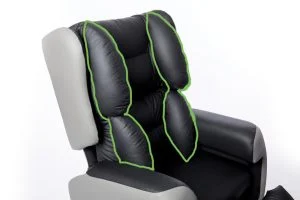
Here you can see the lateral supports and head supports included on the Lento highlighted in green.
For people with scoliosis, it is more common to have loose/removable lateral supports in chairs, as it allows the carer or the individual to reposition the support accordingly. However, it is possible to have built-in/fixed supports, but this is dependent on the person’s needs.
Neck and Head Positioning
Moving up the body, neck and head supports are also good to include in armchairs for people with scoliosis. This again will help to stop you from slumping sideways, and therefore minimise any possibility of worsening your scoliosis.
The neck and lateral supports will help to facilitate a best-as-possible neutral midline from the head right down to the pelvis, and there should be no severe neck flexion.
Tilt-in-space functionality helps to maintain good head positioning. By tilting the chair back, this allows gravity to aid in the prevention of neck flexion.
Tilt-in-space also helps to combat any pressure build-ups and provide pressure relief for people who spend a lot of time seated. The Lento Care Chair would be an ideal specialist seating solution for scoliotic spines. The hospital spec care includes lateral, neck, and head supports, as well as a tilt-in-space mechanical function to relieve pressure and guard against skin degradation.
What do we recommend?
A one size fits all seating solution doesn’t exist for those suffering with scoliosis; the correct chair varies depending on the severity of a person’s condition, range of mobility and external accessories used to provide care to them.
If an individual has a good range of mobility, the right solution may be Lento wheeled riser recliner armchair – the rise and recline chair is close to the floor floor and is recommended if the person sitting in the chair does not need hoisting.
A Lento care chair may be the correct option for a mobility impaired individual that requires moving & handling via a mobile hoist. The Lento Care Chair was designed in collaboration with Occupational Therapists and is equipped to solve regularly occurring problems within rehabilitation.
The Lento chair is well-equipped in adjustability and has all the relevant accessories needed to effectively handle the aforementioned care requirements of an individual sitting in it over prolonged periods of time.
To find your ideal fit, book a no obligation seating assessment with one of our friendly and experienced Occupational Therapists or seating specialists. They can help you create the ideal specialist seating solution that is tailored to your specific needs as individual cases can vary.
We hope that this guide will help to clarify what should be considered in chairs for scoliosis sufferers. For an idea of what you can expect from a seating assessment, take a look at our guide to specialist seating & assessments.





